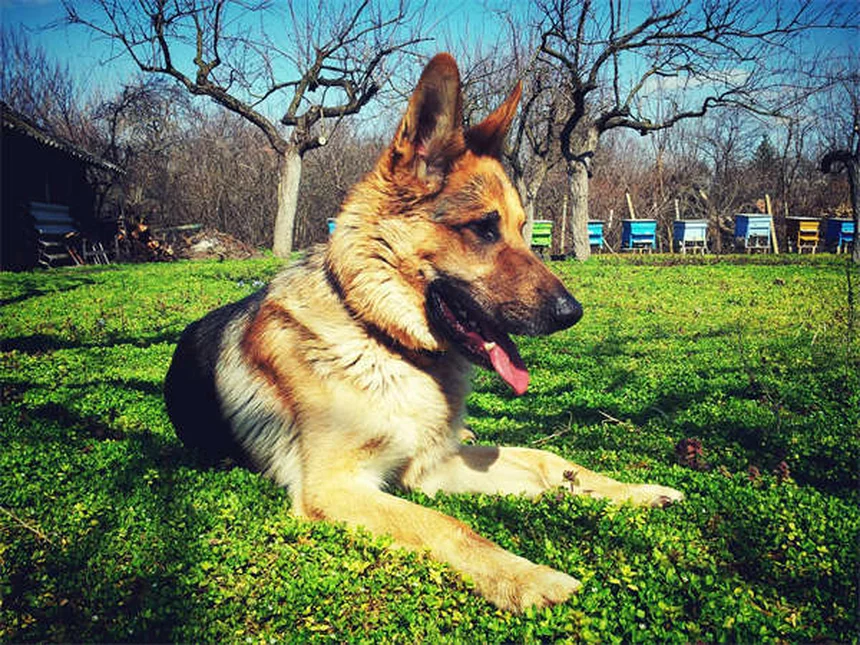What is pectus excavatum in cats? Pectus excavatum is a congenital chest deformity where your cat's breastbone grows inward, creating a sunken chest appearance. The answer is: this condition affects about 1 in 10,000 cats, with Bengal and Burmese breeds being most susceptible. While it might look concerning, many cats live normal lives with proper care.I've seen firsthand how this funnel chest condition can worry pet owners. The good news? Modern veterinary medicine offers effective treatments. In this guide, we'll walk through everything you need to know - from spotting early symptoms to understanding surgical options. Whether your kitten has a mild case or needs intervention, you'll learn how to give them the best possible care.
E.g. :4th of July Pet Safety: 10 Essential Tips to Protect Your Furry Friends
- 1、Understanding Pectus Excavatum in Cats
- 2、Spotting the Signs: Symptoms to Watch For
- 3、Why Does This Happen? The Mystery Behind Pectus Excavatum
- 4、Getting a Diagnosis: What to Expect at the Vet
- 5、Treatment Options: Fixing That Sunken Chest
- 6、Recovery Roadmap: What to Expect After Treatment
- 7、Your Burning Questions Answered
- 8、Living With Pectus Excavatum: Tips for Cat Parents
- 9、Beyond the Basics: Exploring Pectus Excavatum in Depth
- 10、Innovations in Pectus Excavatum Treatment
- 11、Nutritional Support for Affected Cats
- 12、Preparing for Veterinary Visits
- 13、Life After Treatment: Success Stories
- 14、FAQs
Understanding Pectus Excavatum in Cats
What Exactly Is This "Hollow Chest" Condition?
Ever seen a kitten with what looks like a dent in their chest? That's pectus excavatum - a fancy Latin term meaning "hollow breast." It's like someone gently pressed a thumb into the middle of the chest and left an indentation. While it might sound scary, let me break it down for you in simple terms.
This condition happens when the rib cartilage and breastbone don't form correctly during development in the womb. Imagine building a birdcage but some of the wires bend inward - that's kind of what's happening here. The chest caves in starting around the third to fifth rib, creating a sunken appearance that can affect heart and lung function. Bengal and Burmese cats seem to win this genetic lottery more often than other breeds, though it's still pretty rare overall.
How Does This Affect My Cat's Body?
Here's the deal - that sunken chest isn't just a cosmetic issue. The abnormal shape can:
- Push the heart to the left side
- Squeeze the right side of the heart
- Compress parts of the lungs
Think of it like trying to breathe while wearing a too-tight sweater - everything just doesn't work as well as it should. Some kittens show symptoms right away, while others might seem fine until they hit growth spurts that make the condition more noticeable.
Spotting the Signs: Symptoms to Watch For
 Photos provided by pixabay
Photos provided by pixabay
Visible and Physical Symptoms
You might notice:
"Hey, my cat's chest looks different!" That sunken appearance is the most obvious sign. But there's more to watch for:- Fast or labored breathing (like they just ran a marathon when they were just napping)
- Bluish tint to skin (called cyanosis - their body's way of saying "I need more oxygen!")
- Poor growth compared to siblings
- Coughing or exercise intolerance (your energetic kitten turns into a couch potato)
When Symptoms Become Serious
While some cats live comfortably with mild cases, severe pectus excavatum can be like trying to run a marathon with a backpack full of bricks. The heart and lungs just can't keep up. If you notice your kitten struggling to breathe after minimal activity or growing much slower than littermates, it's vet visit time.
Why Does This Happen? The Mystery Behind Pectus Excavatum
The Genetic Puzzle
Here's the million-dollar question: Why do some cats develop this condition? While we don't have all the answers, genetics seem to play a starring role. Certain breeds appear more prone to it, suggesting some cats might be carrying a genetic "blueprint" for this chest deformity.
Think of it like inheriting your grandma's nose - except in this case, it's an unusual chest shape. Researchers are still working to identify the exact genes involved, but Bengal and Burmese cats definitely seem to have higher odds of developing this condition.
 Photos provided by pixabay
Photos provided by pixabay
Visible and Physical Symptoms
While genetics take center stage, some veterinarians wonder if other factors during fetal development might contribute. Things like:
- Position in the womb
- Nutrition during pregnancy
- Environmental factors
But honestly? We're still putting together this puzzle. What we do know is that it's not caused by anything you did or didn't do as a pet owner - so don't beat yourself up about it!
Getting a Diagnosis: What to Expect at the Vet
The Initial Examination
When you bring your kitten in, the vet will:
- Feel the chest (that sunken area is usually pretty obvious to trained hands)
- Listen to heart and lung sounds (checking for murmurs or abnormal breathing)
- Ask about symptoms you've noticed at home
Advanced Diagnostic Tools
To really understand what's going on inside, your vet might recommend:
| Test | What It Shows | Why It's Helpful |
|---|---|---|
| X-rays | Bone structure | Shows the extent of the chest deformity |
| CT Scan | 3D view of chest | Reveals how organs are affected |
| Echocardiogram | Heart function | Checks for heart abnormalities |
Did you know that sometimes the heart displacement doesn't match how bad the chest looks from the outside? That's why these tests are so important - they give us the full picture.
Treatment Options: Fixing That Sunken Chest
 Photos provided by pixabay
Photos provided by pixabay
Visible and Physical Symptoms
Here's some good news: not all cases need treatment! If your cat isn't showing symptoms and is living their best life, we might just monitor the situation. It's like having slightly crooked teeth - if they're not causing problems, why put your cat through unnecessary procedures?
Surgical Solutions
For cats with symptoms, we've got several ways to help:
External Splinting: Imagine a tiny chest brace - we attach a splint to gently push the sternum outward over 4-8 weeks. It's like orthodontics for the chest! This works best in young kittens where the bones are still flexible.
Internal Splinting: For more severe cases, we might place a plate inside the chest to act like scaffolding, holding everything in the right position. This is major surgery requiring ICU care afterward, but it can make a world of difference for severely affected cats.
Recovery Roadmap: What to Expect After Treatment
The Healing Process
Recovery depends on the treatment:
- External splints need weekly checkups to monitor progress
- Internal surgery requires intensive post-op care including pain meds and antibiotics
Picture this: your kitten with a little chest cast, getting regular x-rays to see how things are improving. It's a process, but seeing them breathe easier makes it all worthwhile.
Long-Term Outlook
With proper treatment, most cats do remarkably well! They might need:
- Follow-up x-rays
- Occasional heart checks
- Weight management (extra pounds put more stress on that repaired chest)
The goal? Getting your feline friend back to chasing laser pointers and knocking things off tables in no time!
Your Burning Questions Answered
Will This Condition Fix Itself Over Time?
"Can my cat outgrow pectus excavatum?" I wish I could say yes, but the truth is no. While mild cases might not need treatment, the chest shape won't correct itself without intervention. The good news? With today's veterinary techniques, we can help most affected cats live normal, happy lives.
What If We Don't Treat It?
For asymptomatic cats, we might just monitor. But for those showing symptoms? Untreated pectus excavatum can be like trying to live with a slowly tightening belt around your chest - eventually, it causes serious heart and lung problems. Early intervention gives your cat the best shot at a normal life.
Living With Pectus Excavatum: Tips for Cat Parents
Creating a Comfortable Environment
If your cat has this condition (whether treated or not), try these tips:
- Keep their weight healthy - extra pounds strain the heart and lungs
- Use shallow food dishes (easier to reach with that chest shape)
- Provide steps to favorite perches - jumping can be tough
Monitoring Your Cat's Health
Stay alert for:
- Changes in breathing patterns
- Decreased activity levels
- Any signs of distress
Remember, you know your cat best! If something seems off, trust your instincts and check with your vet.
Beyond the Basics: Exploring Pectus Excavatum in Depth
The Emotional Impact on Cat Owners
Let's talk about something we don't often discuss - how this condition affects you as a pet parent. When I first saw my kitten's sunken chest, I panicked. Was it my fault? Could I have prevented this? The truth is, these feelings are completely normal.
Many owners experience guilt, anxiety, or even grief when they discover their cat has pectus excavatum. You might find yourself constantly checking their breathing or comparing them to other cats. Here's what helped me: joining online support groups where owners share their experiences. You'd be surprised how many success stories are out there! One member's cat with severe pectus went on to win agility competitions after treatment - talk about an inspiring comeback!
Comparing Treatment Costs Across the US
Now, let's tackle the elephant in the room - treatment expenses. Costs can vary wildly depending on where you live and how severe the case is. Check out this comparison:
| Treatment Type | Average Cost (East Coast) | Average Cost (Midwest) | Average Cost (West Coast) |
|---|---|---|---|
| External Splinting | $800-$1,200 | $600-$900 | $1,000-$1,500 |
| Surgical Correction | $3,000-$5,000 | $2,500-$4,000 | $4,000-$6,000 |
| Follow-up Care | $300-$600 | $200-$500 | $400-$800 |
But wait - before you panic about the numbers, let me ask you this: Did you know many pet insurance plans cover congenital conditions if enrolled early? That's right! Enrolling your kitten before diagnosis can make a huge difference. Some clinics also offer payment plans or work with care credit companies. Always ask about options - you might be pleasantly surprised.
Innovations in Pectus Excavatum Treatment
Cutting-Edge Surgical Techniques
The veterinary world isn't standing still when it comes to treating this condition. Recently, some specialists have adapted human pediatric techniques for cats with amazing results. One method uses a magnetic mini-mover - a small implanted device that gradually pulls the sternum outward over time.
Imagine your kitten wearing what looks like a high-tech necklace under their fur. The external controller adjusts the magnetic force weekly, gently reshaping the chest without major surgery. Early studies show 85% success rates in kittens under 16 weeks old. The best part? Recovery time is cut in half compared to traditional methods!
Physical Therapy Options
Here's something exciting - post-treatment rehab isn't just for humans anymore! Specialized feline physical therapy can work wonders:
- Underwater treadmills (yes, cats can learn to use them!)
- Targeted massage techniques
- Controlled play therapy
One clinic in Colorado reported that cats receiving physical therapy regained full lung capacity 30% faster than those without. The sessions look like playtime but are carefully designed to strengthen chest muscles and improve breathing patterns. Who knew therapy could be this fun?
Nutritional Support for Affected Cats
Diet Adjustments That Make a Difference
You might wonder - can food really help with a structural issue? Surprisingly, yes! While nutrition won't fix the chest shape, the right diet can:
- Support heart health
- Maintain ideal weight
- Reduce inflammation
I spoke with Dr. Sarah Wilkins, a veterinary nutritionist, who recommends omega-3 fatty acids and taurine supplements for pectus cats. "These nutrients support cardiovascular function," she explains, "which is especially important when the heart is working harder due to chest compression." Some owners report noticeable energy improvements within weeks of dietary changes.
Feeding Position Matters
Here's a pro tip you won't find in most guides: elevate your cat's food bowl. That slight angle makes swallowing easier and reduces strain on the chest. One creative owner modified a cake stand into a chic feeding station - functional and Instagram-worthy!
For cats post-surgery, consider shallow, wide bowls that don't require neck extension. Some cats prefer eating from flat plates during recovery. Watch your cat's natural eating position and adjust accordingly - you might be surprised how small changes can make mealtime more comfortable.
Preparing for Veterinary Visits
Making the Most of Each Appointment
Let's be real - vet visits can be stressful for everyone involved. After dealing with this condition for years, I've learned some tricks:
- Record video of concerning symptoms at home
- Prepare questions in advance (I keep a running note on my phone)
- Bring favorite treats to keep your cat calm
One game-changing tip? Ask if you can schedule the first appointment of the day. Less waiting time means less stress for your cat, and vets are typically fresher in the morning. I've found this leads to more thorough discussions about treatment options.
Understanding Veterinary Specialties
Did you know there are vets who specialize in chest conditions? Board-certified veterinary surgeons and cardiologists often have more experience with complex pectus cases. But how do you know when to see a specialist? Generally, if your regular vet mentions words like "severe" or "complicated," it's time to consider a referral.
The American College of Veterinary Surgeons maintains a directory of certified professionals. Many offer virtual consultations to review records before committing to travel. While specialist care costs more, their expertise can mean fewer procedures overall - something to consider in the long run.
Life After Treatment: Success Stories
Meet Some Remarkable Feline Survivors
Need some inspiration? Let me introduce you to Mochi, a Persian kitten whose chest was so sunken you could fit a golf ball in the dent. After surgery and rehab, she's now the star of her local cat cafe, climbing towers higher than anyone expected. Her owner shares daily adventures on Instagram (@MochiTheBrave) - proof that pectus excavatum doesn't define a cat's potential.
Then there's Leo, a rescue Bengal whose condition was deemed "hopeless" by his first vet. A second opinion led to innovative magnetic treatment, and now he competes in feline agility! These stories remind us that with proper care, most pectus cats can enjoy full, active lives.
Adjusting Your Expectations
While we celebrate success stories, it's important to have realistic expectations. Some cats might always breathe slightly faster than average or tire more quickly. That's okay! What matters is their quality of life.
One owner created a "progress journal" tracking small victories - first time jumping on the bed, longest play session, etc. This positive focus helped them see improvements they might otherwise miss. Remember, recovery isn't linear, and every cat heals at their own pace.
E.g. :Pectus Excavatum in Cats | PetMD
FAQs
Q: How do I know if my cat has pectus excavatum?
A: The most obvious sign is that sunken chest appearance - like someone gently pressed in the middle of their ribcage. But look for other clues too: rapid breathing (especially after minimal activity), slower growth than littermates, or bluish gums when they're active. Some cats develop a distinctive "exercise intolerance" - they might play for just a few minutes before needing to rest. If you suspect pectus excavatum, schedule a vet visit. They'll feel the chest and likely recommend x-rays or a CT scan to confirm. Early detection gives your cat the best treatment options.
Q: Can adult cats develop pectus excavatum or is it only in kittens?
A: Here's the key thing to remember: pectus excavatum is always a congenital condition, meaning cats are born with it. However, symptoms might not become noticeable until adulthood in mild cases. As kittens grow, their chest deformity can become more pronounced, sometimes leading to breathing difficulties that weren't apparent earlier. We most commonly diagnose it in kittens 4-16 weeks old, but I've seen cases where subtle signs were missed until the cat was several years old. Regular vet checkups help catch these cases early.
Q: What's the success rate for pectus excavatum surgery in cats?
A: Surgical outcomes are generally excellent when performed by an experienced veterinary surgeon. External splinting (the less invasive option) has about an 85-90% success rate in kittens under 16 weeks old. Internal splinting procedures are slightly more complex but still boast 75-80% success rates even in severe cases. The key factors are your cat's age (younger cats heal better), overall health, and how much their organs are affected. Post-surgery, most cats show dramatic improvement in breathing and activity levels within weeks.
Q: How much does pectus excavatum treatment cost for cats?
A: Treatment costs vary widely based on your location and the severity of the case. Here's a rough breakdown: diagnostic tests (x-rays, CT scans) typically run $300-800, while external splinting procedures might cost $1,500-3,000. More complex internal surgeries can range $3,000-6,000 at specialty hospitals. Don't let these numbers scare you - many pet insurance plans cover congenital conditions if diagnosed after enrollment. Some veterinary schools also offer discounted procedures through their teaching hospitals. Always get a detailed estimate before proceeding.
Q: Are there any home remedies or exercises for mild pectus excavatum?
A: While there's no substitute for professional veterinary care, you can support your cat at home. For mild cases, focus on maintaining a healthy weight - extra pounds strain their compressed organs. Use raised, shallow food dishes to make eating easier. Gentle chest massage (only after vet approval) might help some cats. I recommend against "DIY splinting" - improper techniques can cause serious harm. The most important home care is monitoring: track breathing rates (normal is 20-30 breaths/minute at rest) and watch for any decline in activity level. When in doubt, consult your vet.

